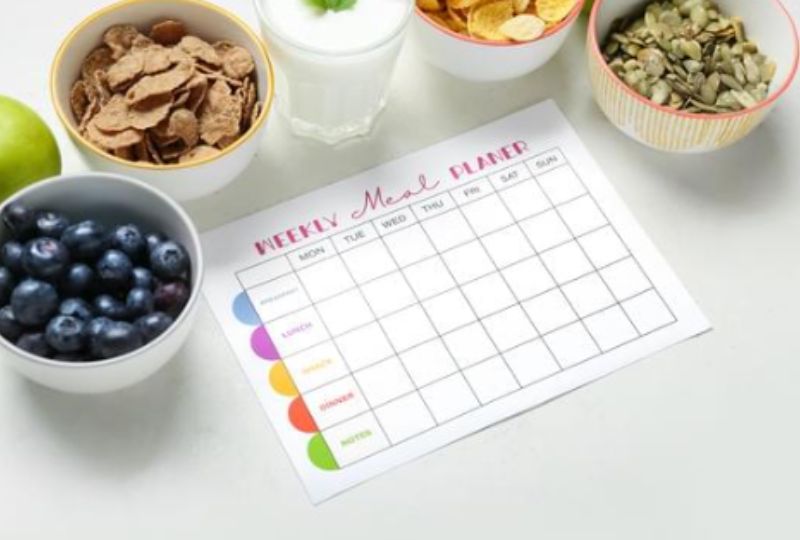A personal wellness plan is a structured approach to improving physical, mental, and emotional well-being. Instead of relying on quick fixes, a well-designed plan helps you build lasting healthy habits, reduce stress, and create balance in all areas of life.
Wellness is not just about eating healthy or exercising—it includes self-care, mental clarity, emotional health, and daily habits that support overall happiness and well-being.
In this guide, you’ll learn how to create a personal wellness plan that fits your lifestyle and helps you feel your best.
Why a Wellness Plan is Important
✅ Gives structure to your health goals → Helps you stay focused and motivated.
✅ Reduces stress and burnout → Prioritizes self-care and mental health.
✅ Encourages long-term consistency → Builds sustainable, healthy habits.
✅ Creates balance in life → Addresses physical, emotional, and mental well-being.
✅ Improves energy and productivity → Helps you feel more motivated and focused.
Now, let’s explore how to build your personalized wellness plan step by step.
Step 1: Define Your Wellness Goals
Start by identifying what areas of wellness you want to improve.
🔹 Physical health → Exercise, nutrition, sleep, hydration.
🔹 Mental well-being → Mindfulness, stress management, focus.
🔹 Emotional health → Self-care, relationships, personal growth.
🔹 Lifestyle balance → Work-life balance, hobbies, relaxation.
✅ Example Wellness Goals:
- Drink 2 liters of water per day.
- Exercise for 30 minutes, 4 times a week.
- Practice 5 minutes of meditation daily.
- Read one book per month for self-growth.
✅ Why It Works: Clear goals help you stay motivated and track progress.
Step 2: Create a Daily Routine for Wellness
Small daily habits lead to big long-term changes. Design a realistic daily routine that includes healthy habits.
✅ Morning Wellness Routine:
- Stretch or do light exercise for 10 minutes.
- Drink a glass of water before coffee.
- Write one thing you’re grateful for.
✅ Afternoon Wellness Breaks:
- Take a short walk or stretch every hour.
- Eat a balanced meal with protein and vegetables.
- Listen to calming music or a podcast.
✅ Evening Self-Care Routine:
- Read or journal for 10 minutes before bed.
- Avoid screens 30–60 minutes before sleep.
- Use aromatherapy or deep breathing for relaxation.
✅ Why It Works: A structured routine helps you stay consistent without feeling overwhelmed.
Step 3: Focus on Nutrition and Hydration
A well-balanced diet and proper hydration improve energy, mood, and overall health.
✅ Simple Nutrition Goals:
- Eat whole, unprocessed foods (fruits, vegetables, lean proteins).
- Reduce sugar and processed snacks.
- Include healthy fats (avocado, nuts, olive oil) for brain function.
✅ Hydration Tips:
- Drink water throughout the day (not just when thirsty).
- Infuse water with lemon, mint, or cucumber for flavor.
- Reduce caffeine and soda intake.
✅ Why It Works: Fuels the body for better concentration, digestion, and energy.
Step 4: Move Your Body in a Way You Enjoy
Exercise should be something you enjoy, not a chore. Find movement that feels good for you.
✅ Ideas for Daily Movement:
- Go for a walk in nature.
- Try yoga or stretching for flexibility.
- Do strength training or bodyweight exercises.
- Dance, bike, or do a sport you love.
✅ Why It Works: Movement releases endorphins, reduces stress, and boosts confidence.
Step 5: Prioritize Mental and Emotional Health
Mental well-being is just as important as physical health. Daily self-care and stress management improve emotional balance.
✅ Ways to Support Mental Health:
- Practice deep breathing or meditation for relaxation.
- Limit social media and set boundaries for digital detox.
- Journal about thoughts, feelings, and personal growth.
- Connect with supportive friends and family.
✅ Why It Works: Helps reduce stress, anxiety, and mental overload.
Step 6: Get Quality Sleep for Full Recovery
Good sleep repairs the body, sharpens focus, and restores energy.
✅ Better Sleep Habits:
- Stick to a consistent bedtime and wake-up schedule.
- Create a relaxing nighttime routine.
- Keep the bedroom cool, dark, and quiet.
- Avoid heavy meals and caffeine before bedtime.
✅ Why It Works: A well-rested body and mind improve productivity, mood, and energy.
Step 7: Track Your Progress and Adjust as Needed
Your wellness plan should be flexible and adaptable. Regularly review your progress and adjust based on your needs.
✅ Ways to Track Wellness Goals:
- Use a habit tracker or journal.
- Reflect weekly on what’s working and what needs improvement.
- Stay patient and celebrate small wins.
✅ Why It Works: Tracking helps you stay motivated and make positive changes over time.
How to Stay Consistent with Your Wellness Plan
🔹 Start with small, manageable habits → Avoid trying to change everything at once.
🔹 Stay flexible and make adjustments → Some days will be harder than others.
🔹 Find an accountability partner → A friend or community can help keep you motivated.
🔹 Remember self-care is not selfish → Taking care of yourself helps you show up better in all areas of life.
Final Thoughts
A personal wellness plan helps you stay balanced, energized, and mentally strong. By focusing on daily habits for physical, mental, and emotional health, you can create a lifestyle that supports long-term well-being.
What’s one wellness habit you’ll add to your routine this week? 😊
